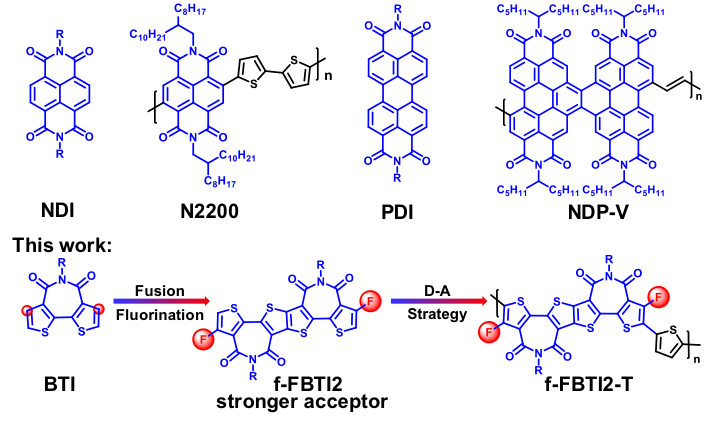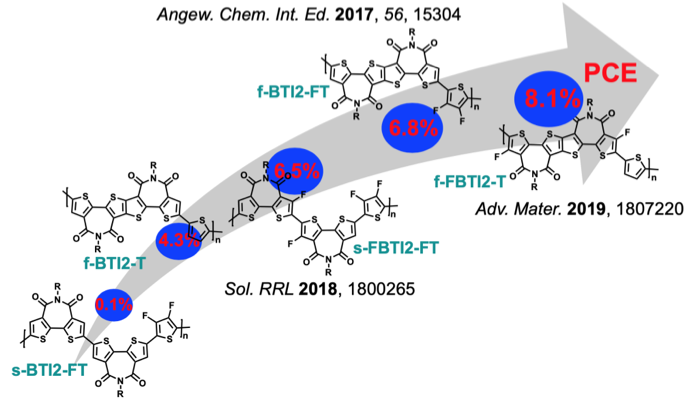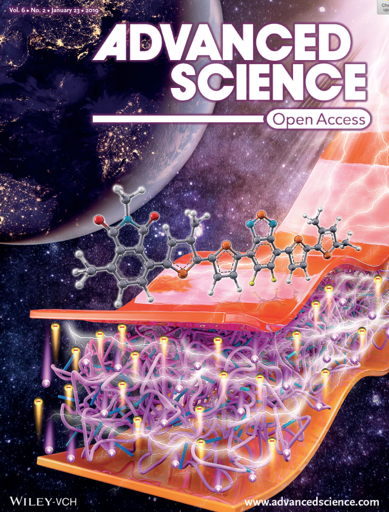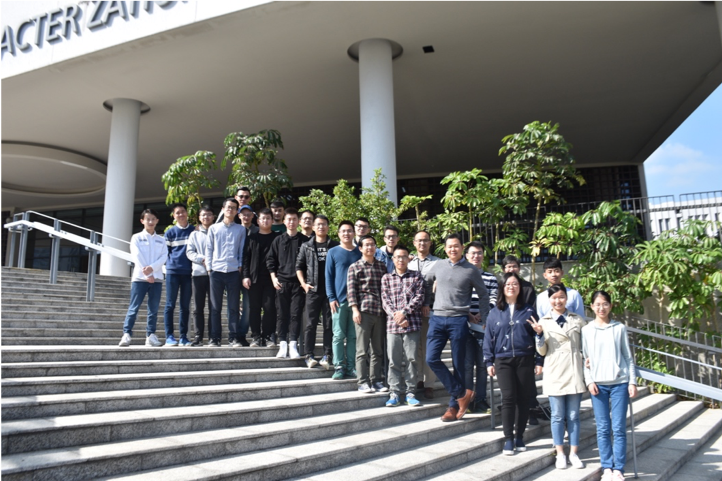Organic chemistry is not restricted to the chemistry laboratory. Material scientists are investigating the benefits of polymers for semiconductors, in order to expand the options for commercial and industrial applications. Researchers have particularly focused on the photoelectric properties of certain organic compounds that can be used in solar cells.
Professor Guo Xugang of the Department of Materials Science and Engineering at Southern University of Science and Technology (SUSTech) led his research team to publish a series of papers over the last few months, investigating different organic polymers for photovoltaic cells. The papers were published in top academic journals Nature Energy, Chemistry – A European Journal, Advanced Science and Advanced Materials between July 2018 and February 2019.
The paper in Nature Energy (IF=46.859) was called “Material insights and challenges for non-fullerene organic solar cells based on small molecular acceptors.” The focus of the research was on non-fullerene organic solar cells. The field of non-fullerene organic solar cells has experienced rapid development during the past few years, mainly driven by the development of novel non-fullerene acceptors and matching donor semiconductors. With hundreds of potential donor and acceptor semiconductor pairs, there is a huge pool of possible combinations, creating a daunting challenge for practical screening and matching.
The research team examined several important conceptual aspects of non-fullerene devices. They highlighted key contributions that provided fundamental insights regarding rational material design, donor-acceptor pair matching and reducing voltage losses. There was also an intensive discussion of the key challenges that still need to be addressed for developing more efficient non-fullerene organic solar cells.
The Nature Energy paper was followed by another review in Chemistry – A European Journal. That paper was titled, “Imide-functionalized polymer semiconductors.” Imide-functionalized polymer semiconductors have received a great deal of interest owing to their unique physicochemical properties and optoelectronic characteristics, including excellent solubility, highly planar backbones, widely tunable band gaps and energy levels of frontier molecular orbitals, and good film morphology. There has been significant research and development in this area, and the review summarizes developments in the field over the last three years. The research team aimed to generate more research interest to realize improved device performance by developing better imide-functionalized polymer semiconductors.


The Advanced Science paper (IF=12.441) was called “Phthalimide‐Based High Mobility Polymer Semiconductors for Efficient Non-fullerene Solar Cells with Power Conversion Efficiencies (PCE) over 13%.” Highly efficient non-fullerene polymer solar cells (PSCs) have been developed based on two new imide-functionalized polymer donors. The research team discovered two donor polymers show substantially high hole mobilities, which are beneficial to charge transport and extraction in solar cells. As a result, a remarkable PCE of 13.31% with a high fill factor of 0.76 was achieved. Their work breaks through the monopoly on benzodithiophene-based P-type polymer semiconductor materials in non-fullerene solar cells. It provides new building blocks and materials for the development of high-performance P-type polymers. This was a highly unique piece, so Advanced Science recommended this article as its back cover article.

Advanced Materials (IF=21.95) published the paper called “High-Performance All-Polymer Solar Cells Enabled by an n-Type Polymer Based on a Fluorinated Imide-Functionalized Arene.” This research team have developed a novel imide type electron-deficient building block f-FBTI2. The synthetic barriers associated with the development of highly electron-deficient fluorinated imide were successfully overcome. The synergistic strategy combining ring fusion and fluorination enables new polymer f-FBTI2-T with optimal electron structure. The all-PSCs using f-FBTI2-T as the n-type polymer acceptor exhibited an extraordinary PCE of 8.1% with minimal energy loss of 0.53 eV. . The emergence of f-FBTI2 will greatly change the scenario in terms of developing n-type polymer semiconductors for high-performance all-PSCs.

Guo Xugang’s postdoctoral fellow and research assistant Tang Yumin is the co-first author of the work. Ling Shaohua, an undergraduate student (now a doctoral student in the Department of Mechanical Engineering at the National University of Singapore) participated in some of the synthesis work. The author of the communication is Professor Guo Xugang.
The research team has received funding from numerous sources for the four papers. Sources from Shenzhen included the Shenzhen Basic Research Fund, the Shenzhen Peacock Plan Project, the Shenzhen Key Laboratory Plan, the Basic Research Fund of Shenzhen City, the SUSTech Presidential Postdoctoral Fellowship, and SUSTech. Other sources from around China included the National Natural Science Foundation of China (NNSFC) and the National Science Foundation of China (NSFC), the China Postdoctoral Science Foundation, the National Key R&D Program, the National Basic Research Program of China, the Hong Kong Research Grants Council and the Hong Kong Innovation and Technology Commission. Foreign funding came from the National Research Foundation of Korea, the US National Science Foundation Materials Research Science and Engineering Centers program through the Northwestern University Materials Research Center and the US Air Force Office of Scientific Research.
Original papers:
https://onlinelibrary.wiley.com/doi/10.1002/adma.201807220
https://onlinelibrary.wiley.com/doi/full/10.1002/advs.201801743
https://onlinelibrary.wiley.com/doi/full/10.1002/chem.201803605
Proofread ByXia Yingying
Photo ByDepartment of Materials Science and Engineering